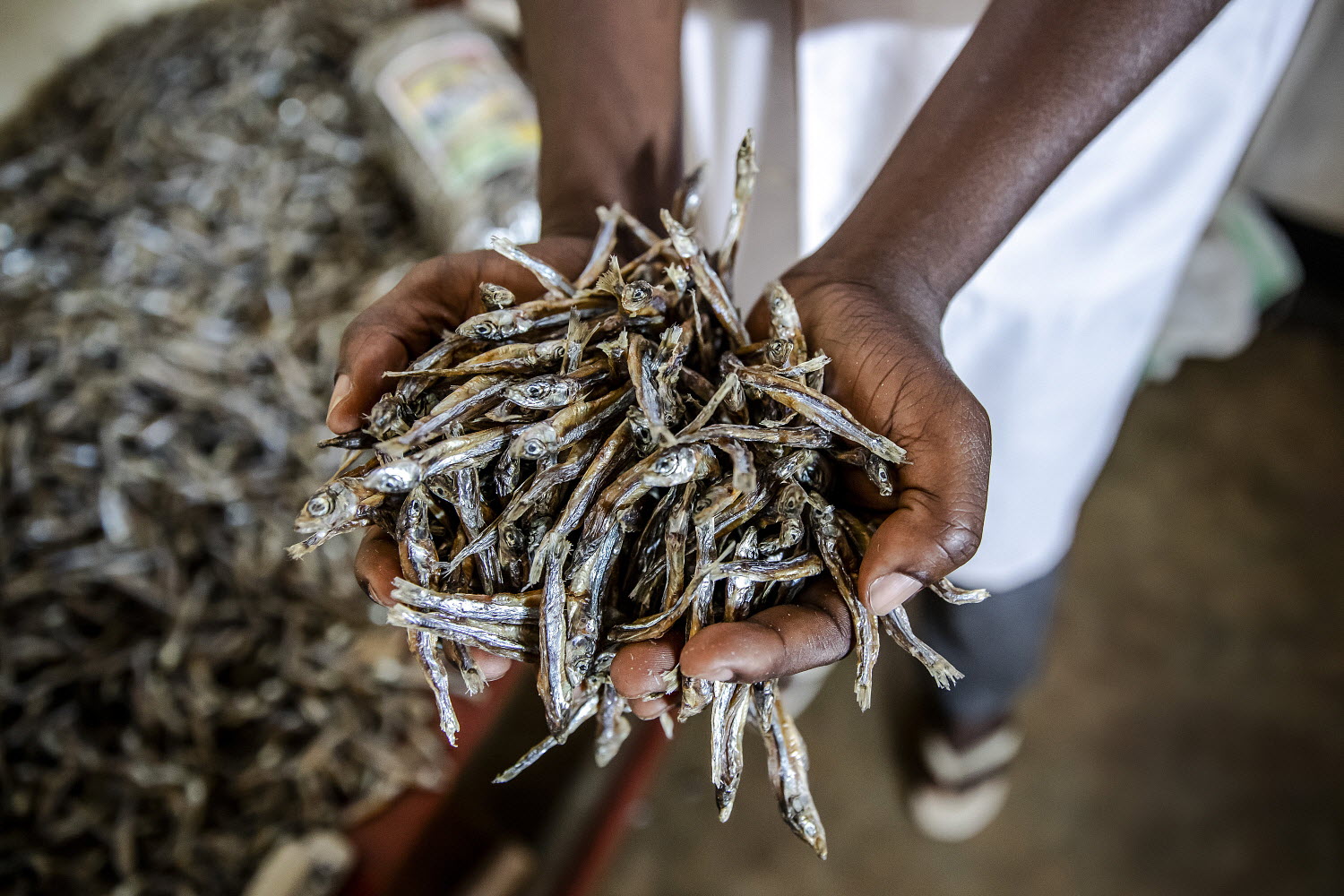Equitable livelihoods, food and nutrition security in small-scale fishing communities: Under threat by the nutrition transition?

by Lena Westlund and Molly Ahern
Small-scale fisheries and aquaculture and related value chains provide employment for millions of people (FAO, 2012; Thompson and Subasinghe, 2011). Fish harvested by small-scale fishers contributes to food and nutrition security through direct human consumption of the catch and indirectly through livelihood opportunities and income to purchase other foods. It is estimated that some 60 million people are employed part or full time with an additional 53 million engaged in subsistence fishing, from which approximately 40 percent are women mostly working in the post-harvest sector (FAO, Duke University & WorldFish, 2022). Catches, in particular of small fish such as small pelagic species, can also contribute to food production by being used in animal feeds for livestock and for fish farming (UN Nutrition, 2021). This change in the use of fish - from food to feed – is something that still needs to be better understood so that potential implications for food and nutrition security, especially for vulnerable population groups in developing countries, can be avoided (UN Nutrition, 2021).
What is usually seen is that with economic development, as populations grow and urbanize, a nutrition transition takes place, whereby demographic transition and changes in physical activity and dietary intake lead to a demand by middle- and higher-income populations for “modern” diets, which includes higher intake of animal-source foods (Popkin, 2004). To meet the growing demand for such foods, focus is often turned to increased production and intensification of livestock and fish farming, which requires feed products that often include fish-derived ingredients (FDI) made from low-trophic fish species. This could then increase the amount of fish, mostly small pelagics, that is needed for FDI and decrease the availability of these fish, which are often directly consumed by people in low-income countries. This raise concerns over equity and shifts the nutrient availability in food and nutrition insecure communities.
Small wild fish have been shown to be more nutrient-rich than larger farmed fish, as they are often consumed whole (including bones, viscera, eyes which are nutrient-rich) rather than only the fillet (Bogard et al., 2015). A recent study showed that if marine capture fish could be used to a larger extent for direct human consumption in low-income food deficit countries (LIFDCs), this would result in a significant reduction in micronutrient deficiencies (Hicks et al., 2019). Direct consumption of low-trophic species, such as those increasingly destined to the fish-based feed industry, has been shown to be a sustainable option – environmentally, socially and economically (Bianchi et al. 2022; UN Nutrition, 2021; Hallstrom et al., 2019).
States have a responsibility to ensure that the nutritional needs of people are being met but also that they earn sufficient income for sustainable livelihoods. The fish based feed industry and the animal production that it contributes to can provide benefits in terms of both employment and nutrition but there may be distributional effects to consider – who benefits and who does not when there is a nutrition transition and changes in demand; how does this impact on vulnerable and marginalized groups. The SSF Guidelines state the need to avoid adversely affecting the nutritional needs of people who depend on fish for their diets in the context of international trade (see paragraph 7.7 below) and the case of direct human consumption of small fish versus FDI production would appear to require similar considerations.
“…States should ensure that promotion of international fish trade and export production do not adversely affect the nutritional needs of people for whom fish is critical to a nutritious diet, their health and well-being and for whom other comparable sources
of food are not readily available or affordable”.
§7.7., SSF Guidelines.
In Sub-saharan Africa, a rapid increase has been seen in FDI production in some countries, bringing concerns and questions regarding its drivers, outcomes and trade-offs.To gain a better understanding of this fish-based feed industry, its stakeholders, associated livelihood activities and the impact on food and nutrition security, FAO and partners conducted a study on the Socio-economic and biological impacts of the fish-based feed industry for sub-Saharan Africa, focusing on nine countries (the Congo, the Gambia, Ghana, Malawi, Mauritania, Senegal, Sierra Leone, Uganda and United Republic of Tanzania). The study found that fish-based feeds are mainly exported, offering some economic benefits to governments and fish workers throughout the value chain. At the same time, however, respondents suggested the industry constitutes a threat to the livelihoods and food and nutrition security of local communities. Looking to the future, stakeholders identified a range of actions that are required to ensure that the fish-based feed industry contributes to equitable social and economic development, nutritional benefits and environmental sustainability, including more research and increased policy attention to the development.


